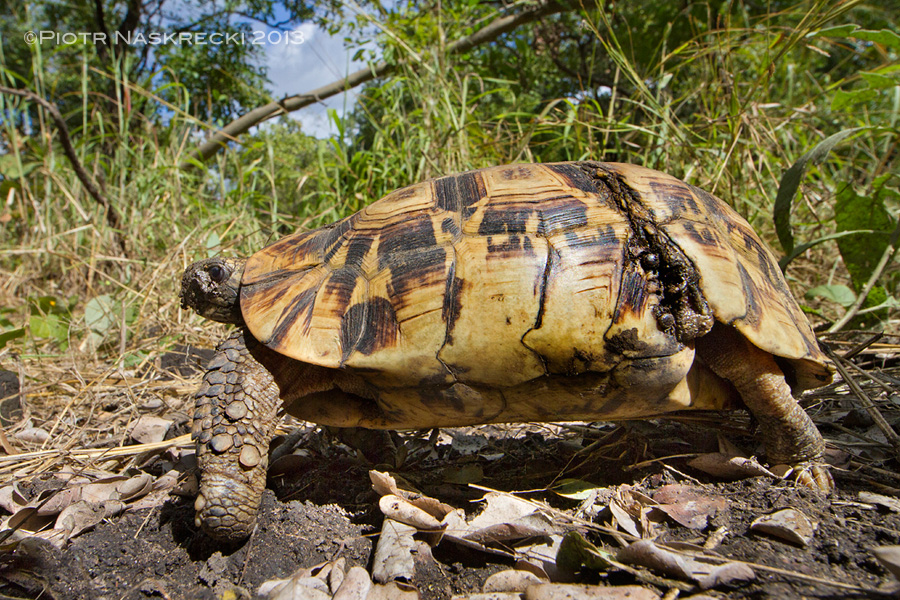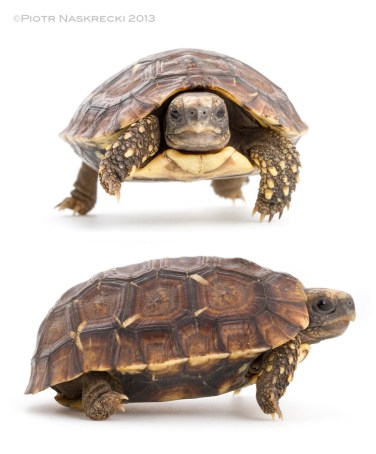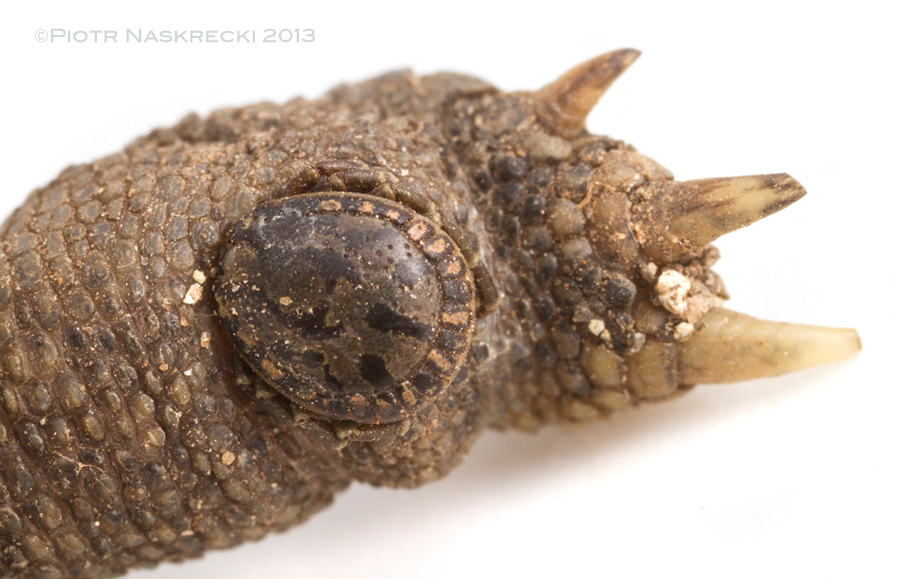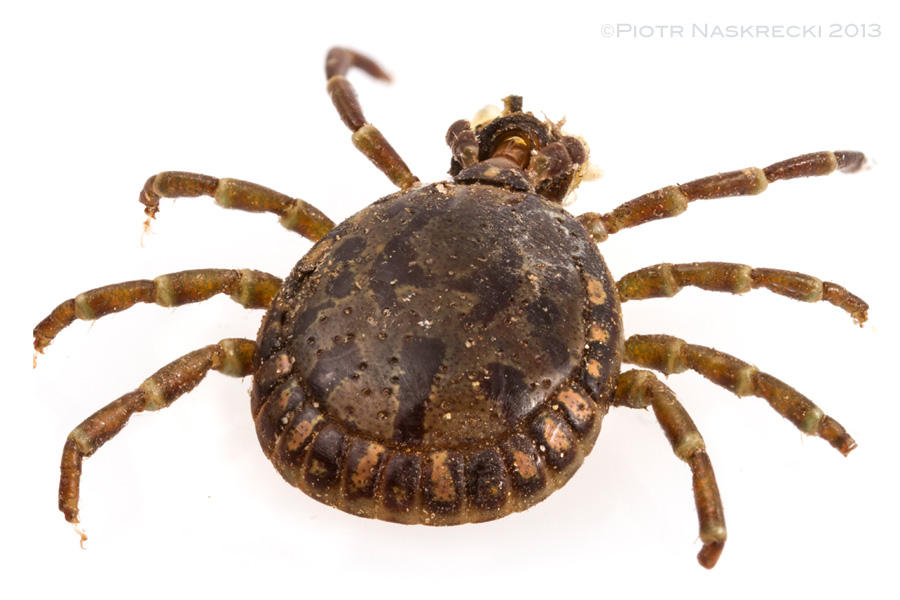
Some time ago I was driving in Gorongosa when I noticed a large tortoise laying in the middle of the road, stuck upside down in the mud. The animal was alive but had what appeared to be a large wound in the posterior part of its cracked carapace. There were fresh tracks of a civet all around it in the mud, and I assumed that the civet found an injured tortoise (I didn’t think a civet could do it itself) and was hoping to eat it. I pulled the animal out of the muck and only then recognized what I was looking at – the tortoise was not injured at all, and what I took for a wound was a flap of skin that connected the front part of the shell with its movable back. Because it was not an ordinary tortoise, but a Hingeback tortoise (Kinixys), a member of a remarkable group of reptiles that are capable of closing shut the back of their shells to protect the hind legs and the tail. This, combined with the head tightly pulled into the front of the shell and blocked by its heavily armed front legs makes the hingeback tortoise virtually immune from attacks by smaller predators. Judging by the dense trail of civet tracks around the tortoise it seemed that the mammal had spent a lot of time in frustration, unsuccessfully trying to get to the soft parts of the reptile.

Although the movable carapace is a great way to protect the rear part of the body, the flap of skin that connects the two components of the carapace is a favorite location for another enemy of the tortoises to attack – the ticks. Every tortoise I found in Gorongosa carried several huge, heavily armed ticks (mostly of the genus Amblyomma), whose body shape and sculpturing was surprisingly similar to that of the tortoise. Carrying a bunch of blood-sucking ectoparasites is no fun, but the burden of being drained by them is probably particularly heavy on smaller, younger animals. A few days ago I found a tiny Hingeback tortoise, one whose hinge was not yet fully developed, and it carried on its leg one of the largest ticks I have ever seen. It was as if I had a parasite the size of a football permanently attached to my body. I removed the tick from the tortoise, put one of the animals into a vial of alcohol, and applied some antiseptic to the other and let him back on his merry way.

Hingeback tortoises are quite common in Gorongosa, and I see them often as they cross the network of trails. But across Africa their numbers are declining as the result of habitat loss and collecting for the pet trade. Every year about 20,000 of these animals are exported to be sold in pet stores in the US and Europe, and Mozambique alone sends out about 3,000 of these animals every year (this is the official quota allowed by CITES, the actual number is undoubtedly higher). Luckily, recently the importation of most of Hingeback species was banned in the US. The reason – ticks. Some of the ticks carry a disease which, while not harmful to the reptiles, is often fatal to cattle – the Heartwater disease, caused by rickettsia Ehrlichia ruminantium. And so, the same parasite that makes the tortoises’ life miserable may in the end help them survive in the wild. I guess you never know who your true ally is.


In Brazilian Amazon I saw some tortoises, from the genus Chelonoidis with the same problem with ticks. However, I saw huge (and totally disgusting) ticks on their necks, which I assume is also a hotspot for the ticks. Well, at least in this case, the parasite seems to be turning into a beneficial partner in a world of crazy people that need the most exotic pets their money can buy.
I’d like to know more about how this hinge develops, since there doesn’t seem to be a hint of it on the juvenile. I note several ticks on the hinge.
Speaking of ticks, this doesn’t look like the Amblyomma species I know from North America, and I wonder if this species might be awaiting a new genus name?
Some vets in our area have been able to repair and re-release tortoises and turtles that have been hit by cars or stepped on by cows. Fiber glass and epoxy saves the day!
Is it just me, or does the tick’s body look a little like a turtle’s carapace? Fascinating creatures, great post.